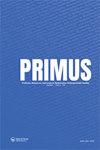Utilizing a Blended + Flipped Learning Approach in a Calculus for Life and Management Sciences Classroom
Q3 Mathematics
引用次数: 0
Abstract
The current study evaluated the success of implementing a blended + flipped structure in a Calculus for Life and Management Sciences course. By reimagining two of the three weekly instructional hours as online asynchronous lessons, we redesigned a 200-person section into 30-person sections, with minimal additional instructor resources. Findings indicated that students viewed the course positively, with perceptions positively correlating with course outcomes. Further, students reported more positive beliefs relating to their ability to accomplish course learning outcomes, comfort with math, and perceptions of in-class readiness compared to those in the traditional course format. Significant differences in grade distributions were also observed.在生命与管理科学微积分课堂中运用混合+翻转学习方法
目前的研究评估了在生命与管理科学微积分课程中实施混合+翻转结构的成功程度。通过将每周三个教学小时中的两个重新设计为在线异步课程,我们将200人的部分重新设计为30人的部分,并减少了额外的教师资源。研究结果表明,学生对课程的看法是积极的,这种看法与课程成果呈正相关。此外,与传统课程形式的学生相比,学生对他们完成课程学习成果的能力、对数学的舒适度和对课堂准备的看法有更积极的看法。在等级分布上也观察到显著差异。
本文章由计算机程序翻译,如有差异,请以英文原文为准。
求助全文
约1分钟内获得全文
求助全文

 求助内容:
求助内容: 应助结果提醒方式:
应助结果提醒方式:


